Review Bosch eBike ABS – Safety feature or gimmick?
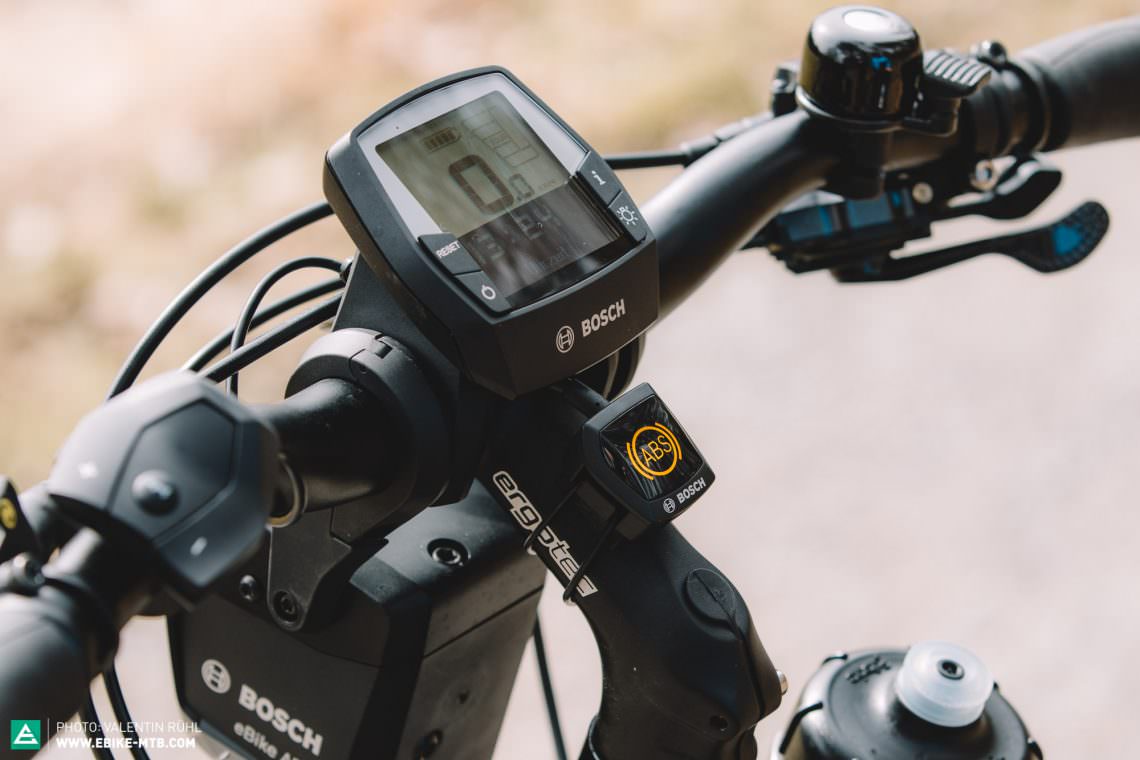
The anti-lock braking system has long been a standard feature in cars and has recently become mandatory for the production of new motorcycles. With Bosch’s new eBike ABS-system the technology is now reaching out to the bicycle-world. Can the system improve the safety of our bikes the same way it did with our cars?
“Mirror, shoulder, signal – and now perform an emergency stop!” – and there you are slamming your foot on the brake pedal while driving at full-speed! We’ve all been there and done that after hesitating for a while on our first driving lesson. But how is it on a bicycle? The fierce power of modern disc-brakes can quickly become the worst nightmare of unskilled or distracted riders. If you’re not sensitive enough with your brakes or forget to shift your weight back you might find yourself flying head-first over the bars. In wet conditions and loose terrain overzealous braking can cause your front wheel to slip away on the wet tarmac. Even the lightest touch on the front brake can cause the front wheel to lock-up and slip-away sideways. But the eBike-ABS from Bosch is designed to address exactly these scenarios by regulating the power of the front brake – a promising improvement in riding safety. But who can benefit from the new eBike ABS system and how does it actually work? We tested the ABS thoroughly on a Riese & Müller Delite GT Touring.

The Bosch eBike ABS in detail
When choosing a partner to develop their new ABS system Bosh relied on MAGURA’S proven braking know-how. The German brake specialist developed the CMe ABS brakes and the sensor-rotors especially for the eBike ABS system. When this is activated the control unit reduces the pressure in the braking-circuit and prevents the front wheel from locking-up. Accurate speed measurements on both wheels help determine when the ABS is needed. As an additional safety feature the eBike ABS stays active whenever the motor is switched on and keeps working even when the battery is almost completely flat. A warning light indicates the status of the system and warns you when it’s not ready. What bothered us the most is that the control-light was installed in a separate stem-mounted housing when it could have been integrated into the Bosch Intuvia display directly. Together with the massive control unit under the handlebars and the many cables and wires the cockpit of our test bike looked pretty crammed and a little untidy.

We know it’s just a control light but we would have loved to see better integration with the existing displays.
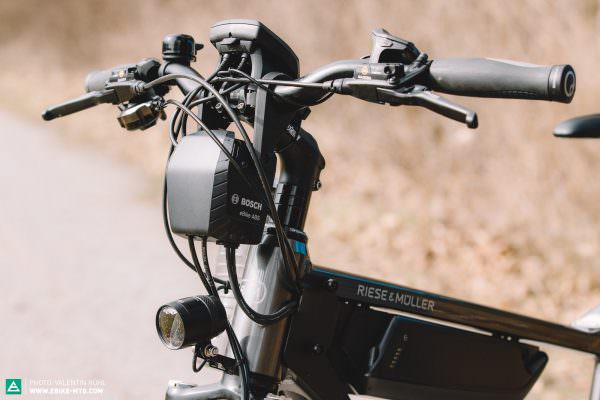
Due to the massive control unit and the many cables and wires the cockpit appears untidy
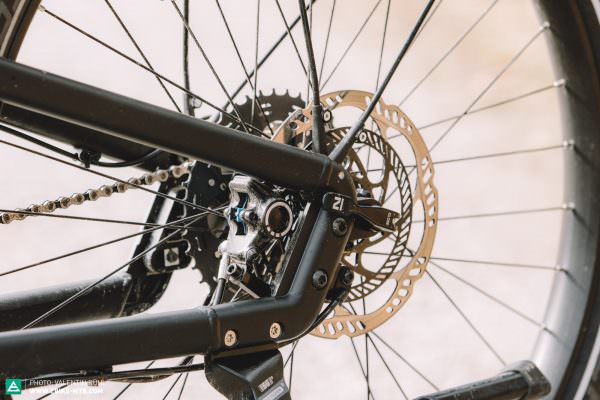
Why is Bosch using a inaccurate spoke-sensor when the brake itself has a way more accurate high-tech speed -sensor built in? We don’t know but integration is the key word.
Riding the Bosch eBike ABS
We’ve always been big fans of MAGURA’s four-piston brake and its fierce braking-power in an eMTBing-context. But now – despite the big brake-lever – the newly developed front-brake can no longer deliver MAGURA’s signature-braking power – not even when the ABS is deactivated (e-bike motor switched-off). So it’s not surprising that you have to pull hard to perform emergency stops. On the other hand the ABS system allows you to brake hard with both brakes simultaneously. On tarmac the system regulates the front brake as soon as the rear wheel threatens to lift off. This makes the dreaded over-the-bars scenario almost impossible. Although the rear wheel locks and skids leaving thick black rubber-marks on the tarmac the regulated front wheel keeps your eBIKE on track. The braking distance on dry roads is surprisingly short.
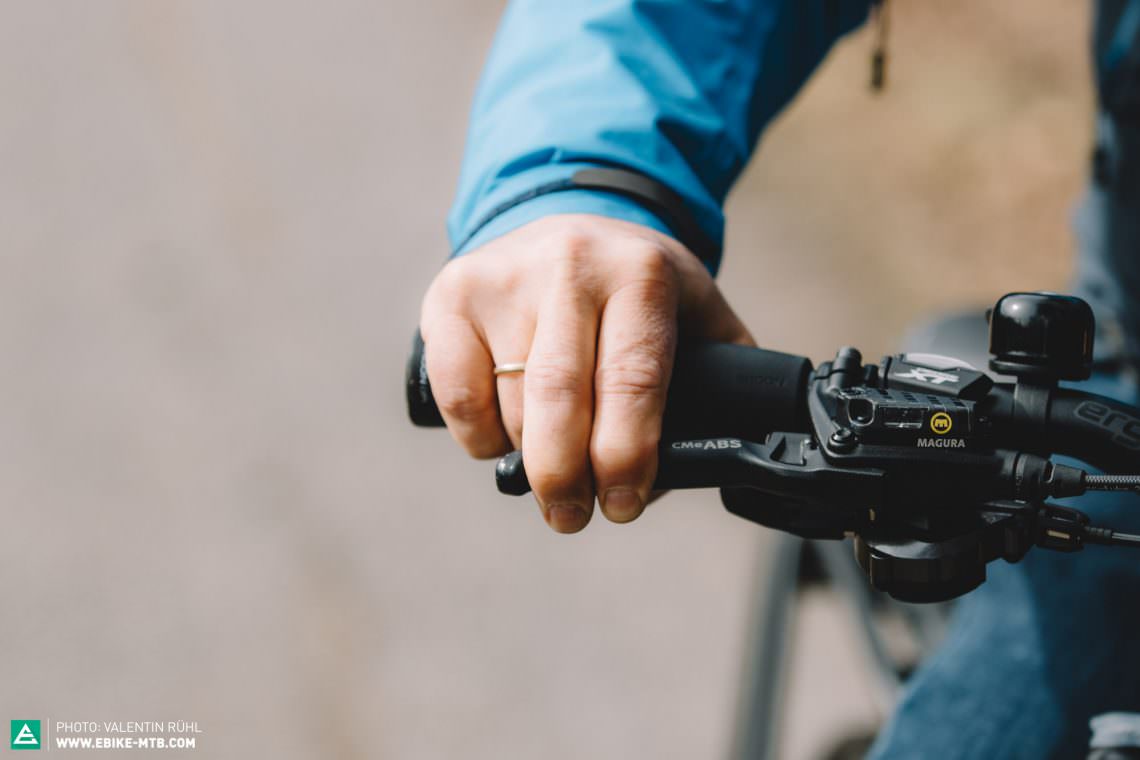
With the activated ABS you can pull your brake-levers hard without kissing the tarmac shortly after – top!
But how does the system work in pouring-rain, on loose gravel paths and forest roads? With this little grip it’s unlikely that you’ll ever fly over the bars. It’s more likely that when braking the front wheel will lock-up and slip away to one side. But the ABS eBike helps in these scenario too – at least when you’re riding in a straight line. And indeed – when performing emergency stops on wet moss or slippery leafs – we came to a halt safely. The front wheel locksbrakes repeatedly for a fraction of a second but never locks-up entirely or slips away. Sudden obstacles are still a major issue though. In our opinion the system regulates the braking power on the front wheel a little too eagerly and causes the braking distance to increases unnecessarily. When the brake is used continuously for an extended period of time the system reaches its limitations and in extreme cases it can even cause the wheel to lock-up. The ABS is not the ultimate antidote against crashing and we recommend you carry on using the valuable advice from your driving instructor when finding yourself in tricky situations: “Adaptive riding style”!
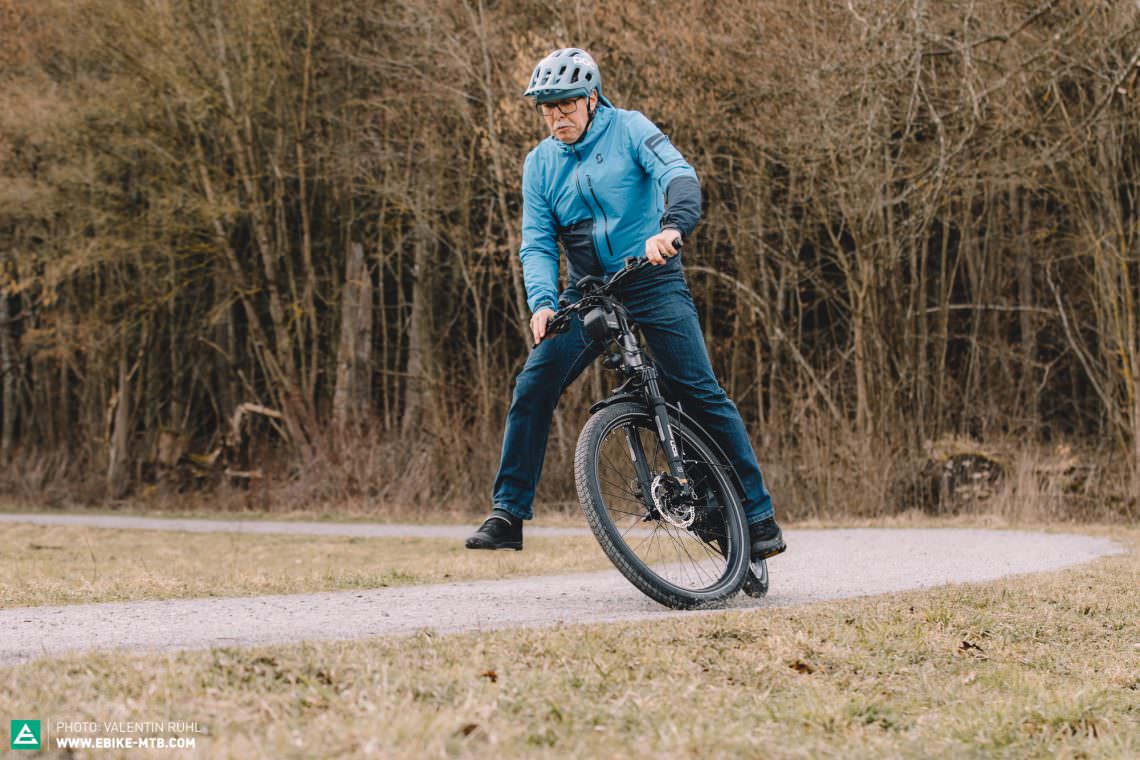
The eBike ABS is not available as an aftermarket option. However it will be available on a selection of city-, touring- and trekking-bikes from autumn 2018. This means it will reach pretty much all of its potential target groups. The system (still) numbs the braking power a little too much and feels too undifferentiated to work well in a more sporty context. However inexperienced or careful riders will benefit enormously from the added safety-factor. That’s why the ABS eBike from Bosch is the perfect solution for rental e-BIKEs (i.e. for tourists) and can reduce the risk of accidents on commutes while helping inexperienced riders to feel more confident.
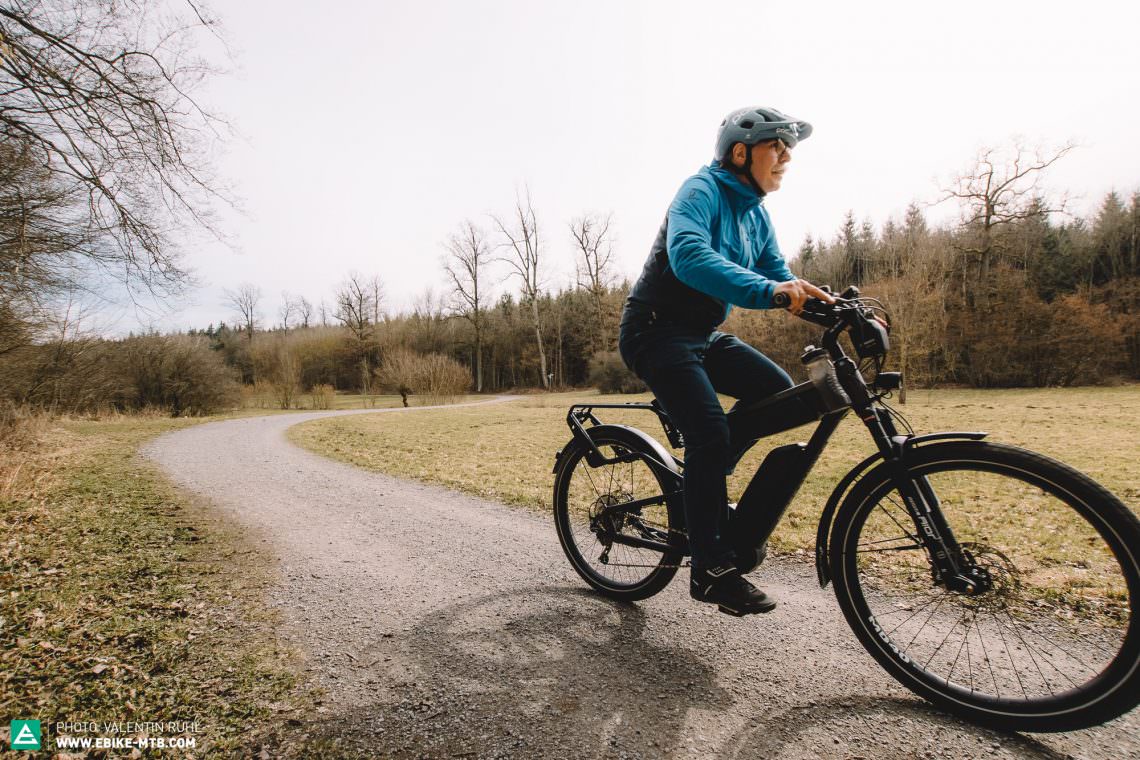
Conclusion
The Bosch eBike ABS is a great safety feature to be used in city-, touring- and trekking-scenarios. It convinced us with its great functionality on the tarmac and that’s exactly why it won the renowned Design & Innovation Awards 2018. The ABS system can efficiently help prevent unplanned over-the-bar excursions and unpleasant incidents on lose terrain. However the system reaches its limitations in slippery conditions and may increase the braking distance unexpectedly.
More Info at: bosch-ebike.com
Did you enjoy this article? If so, we would be stoked if you decide to support us with a monthly contribution. By becoming a supporter of E-MOUNTAINBIKE, you will help secure a sustainable future for high-quality cycling journalism. Click here to learn more.
Words: Photos: Valentin Rühl








